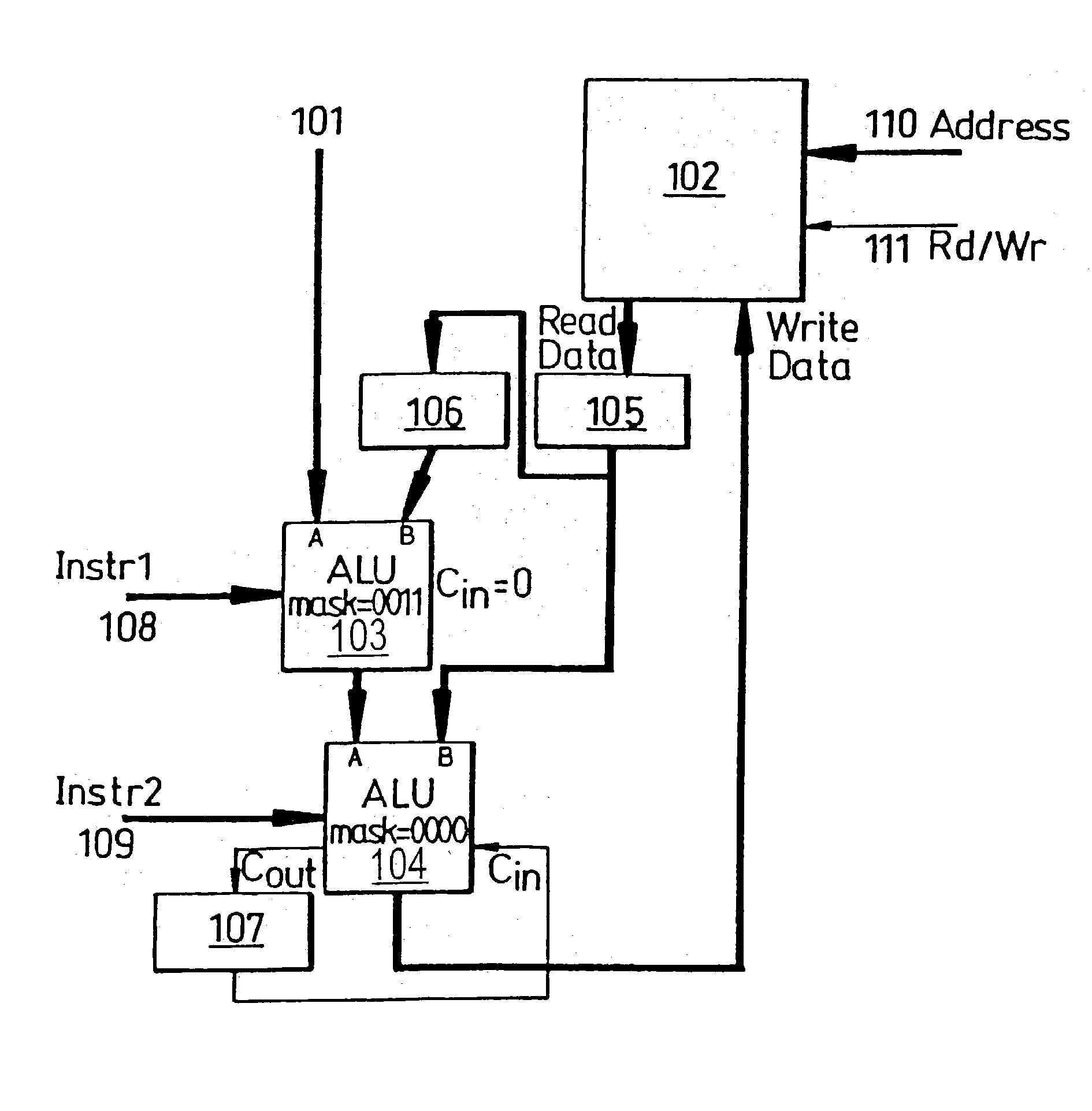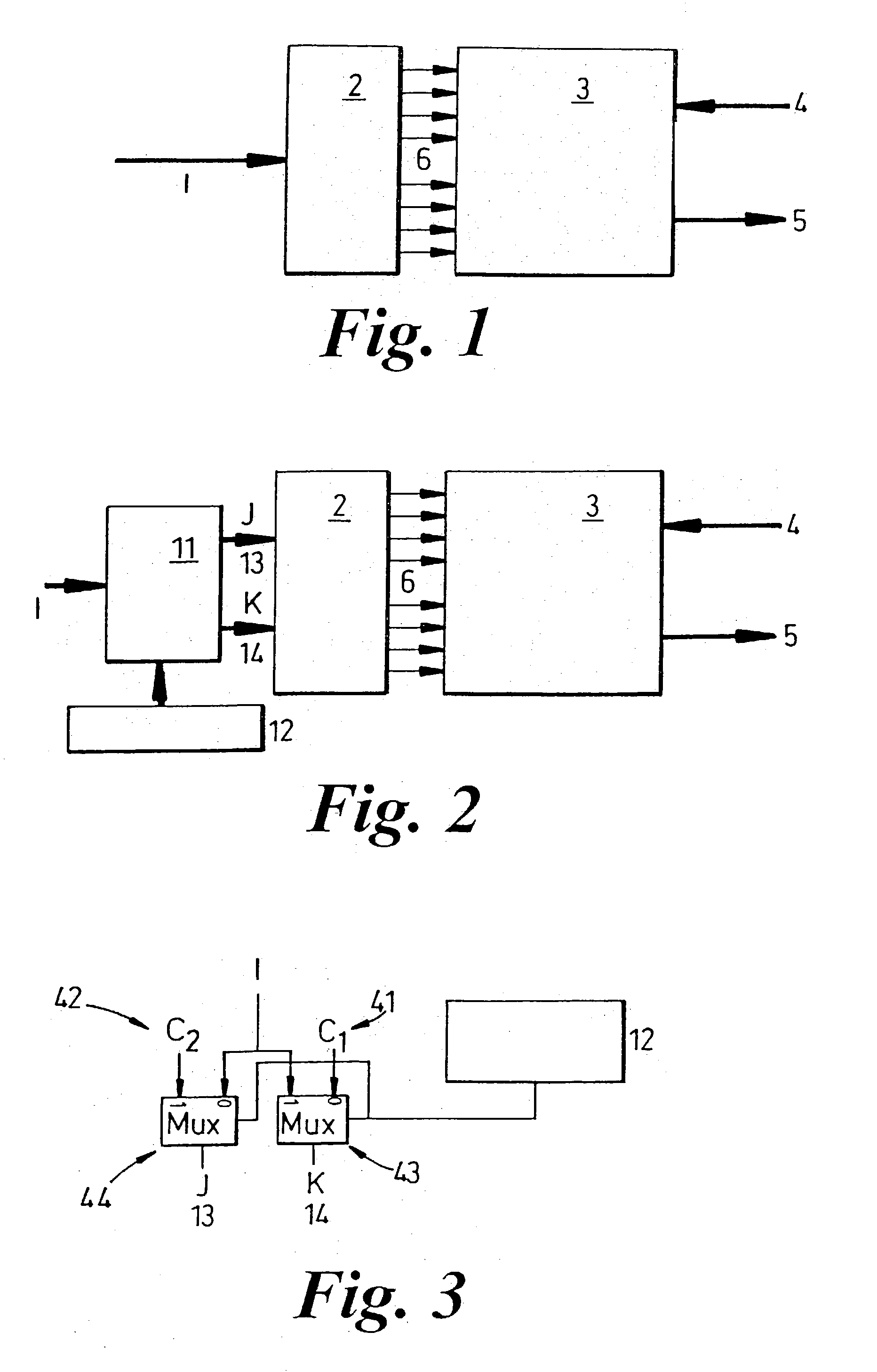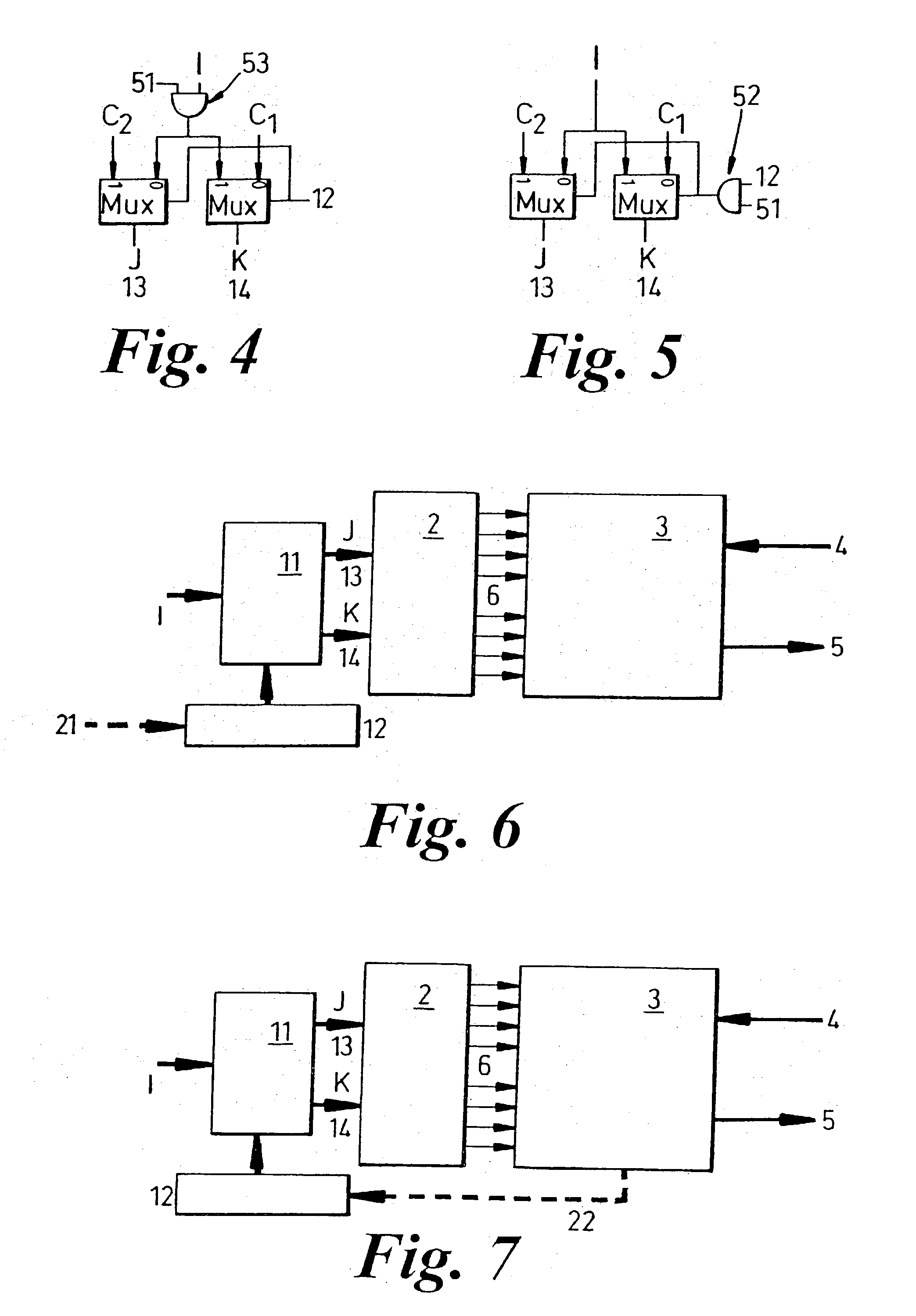Method and apparatus for varying instruction streams provided to a processing device using masks
a technology of instruction streams and processing devices, applied in the direction of program control, computation using denominational number representations, instruments, etc., can solve the problems of large quantities of time and circuit space consumed to accommodate the broad data channel required, large number of bits in each instruction word, and code written for risc processors tends to be considerably longer than code written for cisc processors
- Summary
- Abstract
- Description
- Claims
- Application Information
AI Technical Summary
Benefits of technology
Problems solved by technology
Method used
Image
Examples
example 1
RISC Architecture
[0034] A key feature of RISC processor designs is the use of a relatively simple instruction encoding. Typically all instructions are the same size, and follow a very restrictive format as to which bits can be used for a particular purpose (e.g. as register specifiers, immediate constants, operation specifiers etc.). The advantage of this approach is that the logic required to decode instructions can be simple and thus a small and fast processor can be built, but the corresponding disadvantage is that many instructions are larger than is strictly necessary for example, it may be necessary to encode 2-operand instructions as 3-operand instructions with one input duplicated as the relevant 2-operand instruction cannot be fitted into the instruction set, and it may be necessary to allocate space for immediate constants or branch offset values according to the largest possible size required, rather than according to a typical size.
[0035] When individual instructions are...
example program
Simple Loop
[0050] The following program (written in C, as are all the program examples which follow) represents a simple loop
4 int total = 0; for (int i = 0; i < max; i++) { A[i] - B[i] + C[i]; total += A[i]; }
[0051] The instruction sequence for this loop is shown in Table 4 below.
5TABLE 4 Instruction scheme for simple loop Mode Instruction Comments last instruction of register initialise? RX R0 = R1 - R2 sets condition flags ready for branch JX Branch to end of loop RX R8 = [R4] read B[i] Start of Loop Body RX R9 = [R5] read C[i] RX R10 = R8 + R9 A[i] = B[i] + C[i] IX [R3] = R10 write A[i] RX R6 = R6 + R10 add to running total RX R3 = R3 + R7 update A array index RX R4 = R4 + R7 update B array index RX R5 = R5 + R7 update C array index RX R1 = R1 + R11 increments i, the loop count RX R0 = R1 - R2 test for end of loop JX Branch back to start of loop NOP for alignment purposes First instruction after loop Second instruction after loop . . .
[0052] The register assignments for this ins...
example 2
CHESS Architecture
[0054] CHESS is a field programmable array structure for datapath-intensive applications. The CHESS architecture is described in the following applications, all of which are incorporated by reference in the present application: International Patent Application No. GB 98 / 00248, designating the United States of America, filed on Jan. 28, 1998, and European Patent Application No. 97310220.5, filed on Dec. 17, 1997, and US counterparts thereto. The overall architectural layout is not significant for the present example: for present purposes, CHESS can be considered to comprise an array of 4-bit ALUs with routing switches to enable each ALU to be connected to other ALUs through respective inputs and outputs.
[0055] FIG. 8 shows the inputs and outputs of a CHESS 4-bit ALU. Each ALU has 3 4-bit input paths 32, 33, 34 to inputs A, B and I, and 1 4-bit output path 37 which carries the output F of the ALU. These input and output paths are connected to the routing switches. Th...
PUM
 Login to View More
Login to View More Abstract
Description
Claims
Application Information
 Login to View More
Login to View More - R&D
- Intellectual Property
- Life Sciences
- Materials
- Tech Scout
- Unparalleled Data Quality
- Higher Quality Content
- 60% Fewer Hallucinations
Browse by: Latest US Patents, China's latest patents, Technical Efficacy Thesaurus, Application Domain, Technology Topic, Popular Technical Reports.
© 2025 PatSnap. All rights reserved.Legal|Privacy policy|Modern Slavery Act Transparency Statement|Sitemap|About US| Contact US: help@patsnap.com



